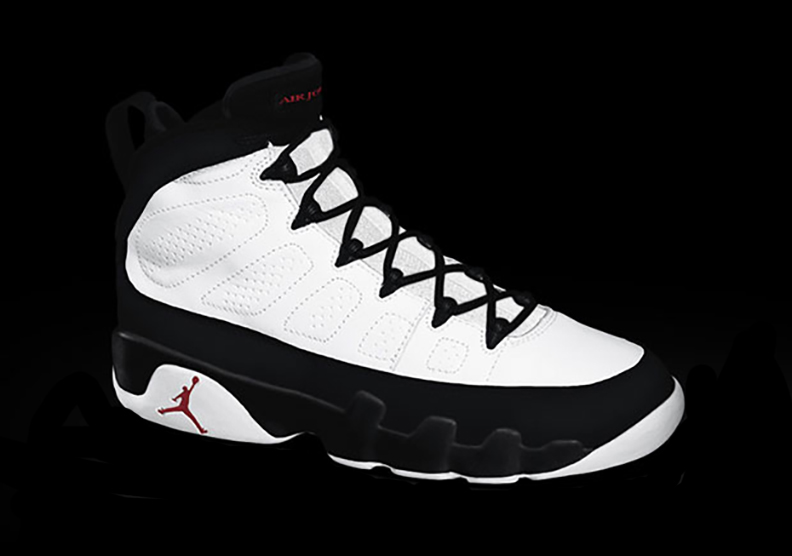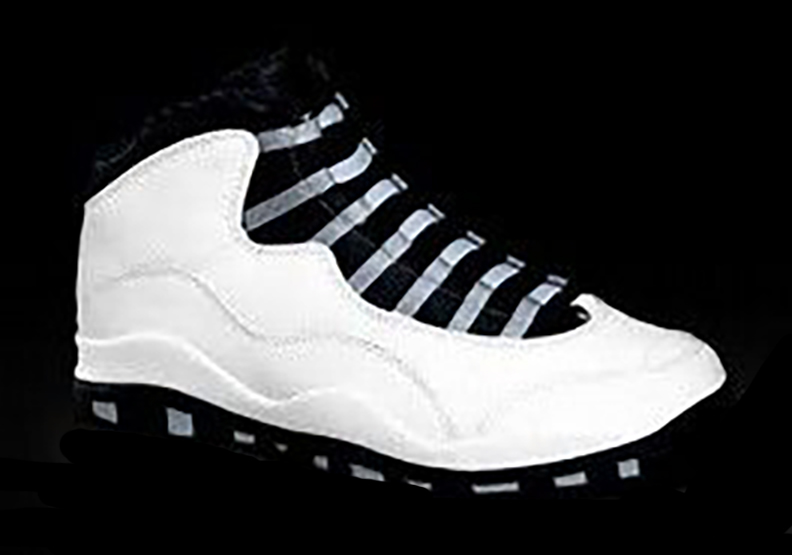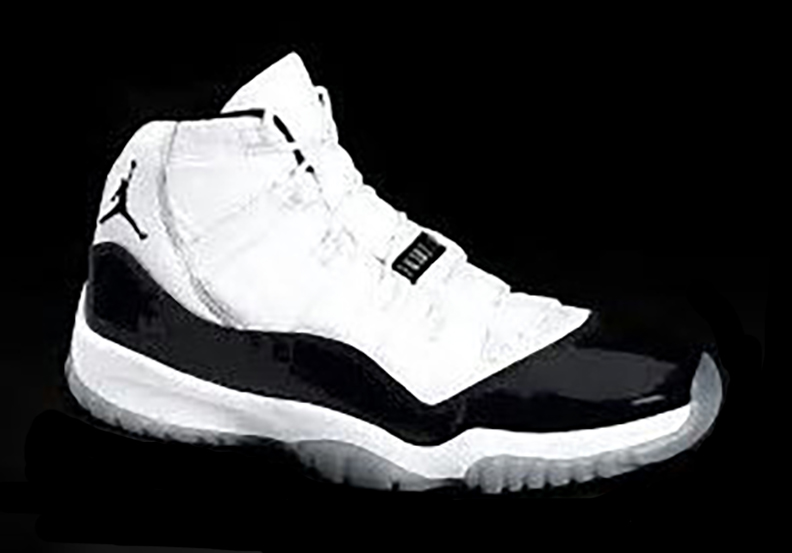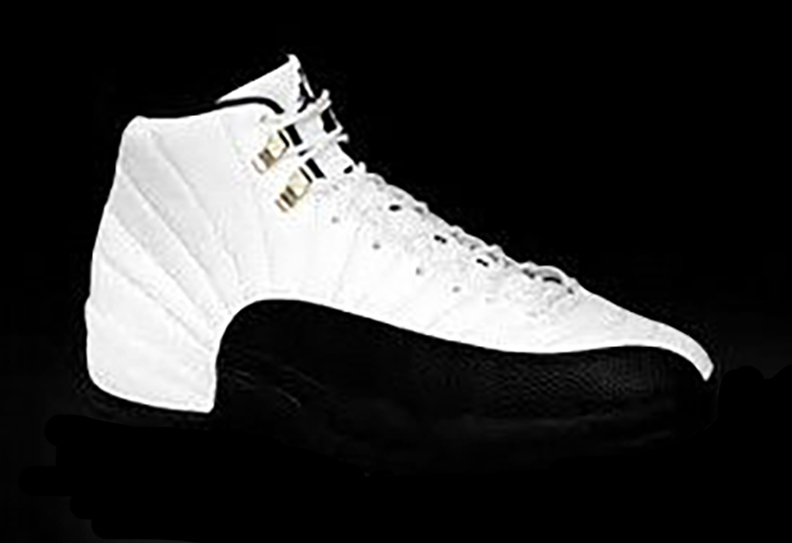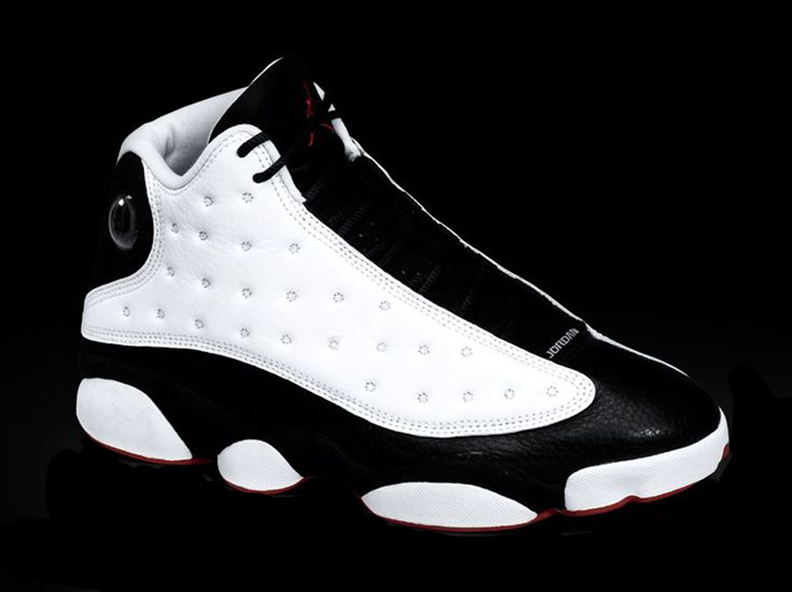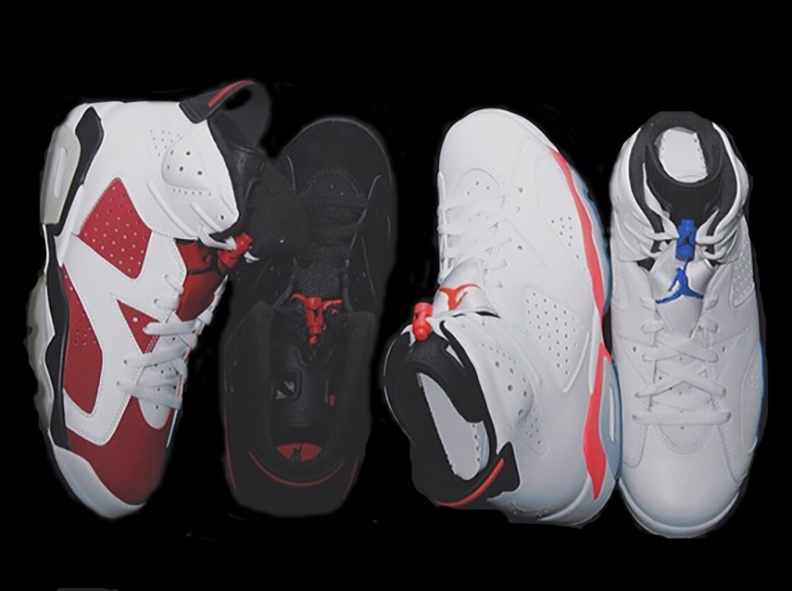Air Jordan I
The Chicago Bulls used their third overall draft pick on Jordan, a 1982 NCAA champion who would go on to win Olympic gold later in the summer of 1984. Jordan signed a five-year endorsement deal with Nike, worth $2.5 million (plus royalties), an enormous outlay for an athlete who hadn’t yet proven himself on the professional level.
The NBA banned the original Air Jordan for not meeting the league’s strict policy on uniforms and colors. Jordan wore them anyway and faced a $5,000-per-game fine as a result. Recognizing a marketing opportunity when it presented itself, Nike happily paid the fine. And MJ rocked them all the way to his Rookie of the Year honor.
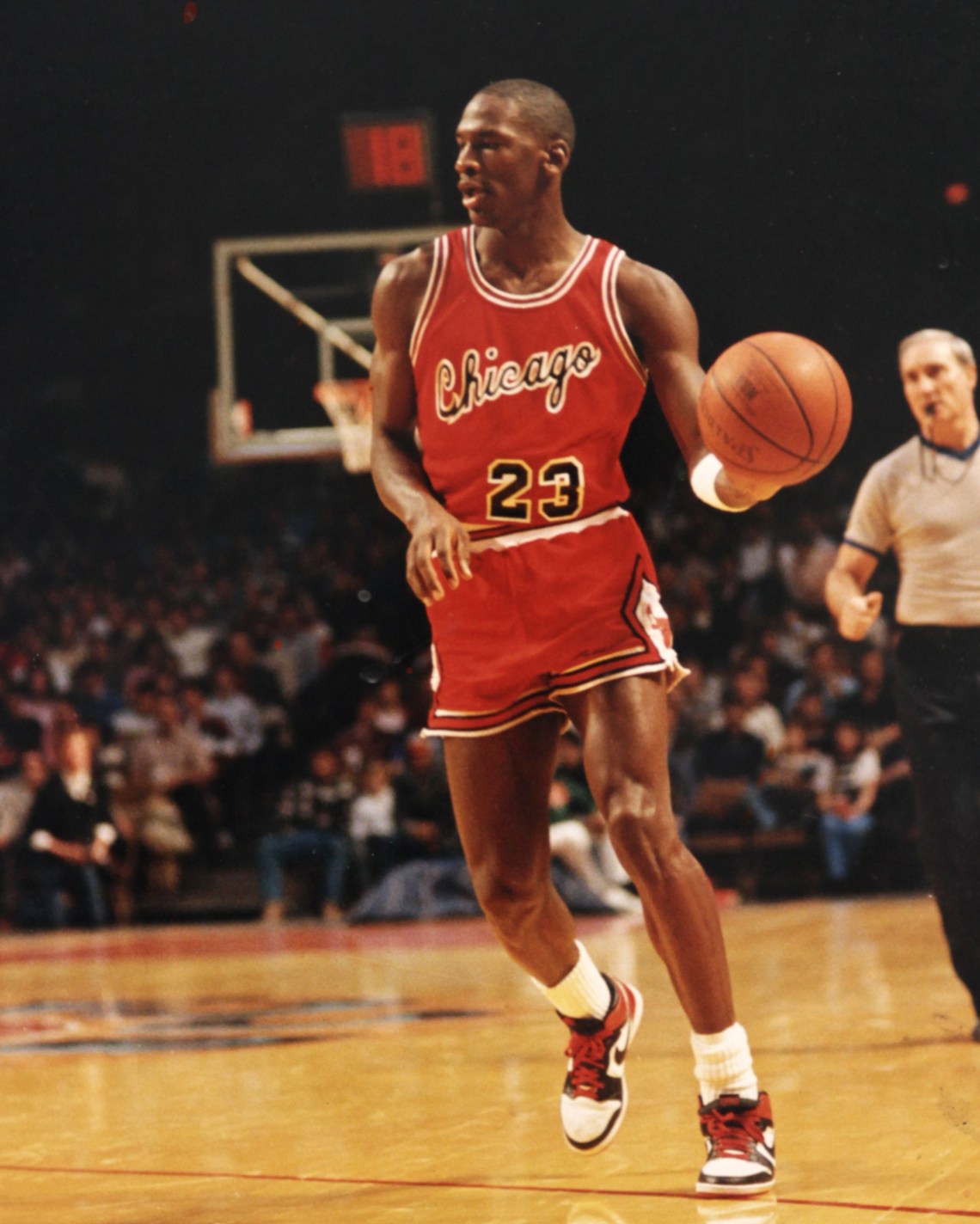
Air Jordan II
Nike faced a unique challenge following the unprecedented success of the original Air Jordan; how to follow it up. The popularity of the shoe’s namesake, Michael Jordan, already had begun outgrowing his home country, and Nike went to Italy to produce the Air Jordan II.
The AJ II was the first to not feature Nike’s familiar Swoosh logo. “Nike” appeared across the top of the heel counter, and the Wings logo of the original Air Jordan was on the tongue.
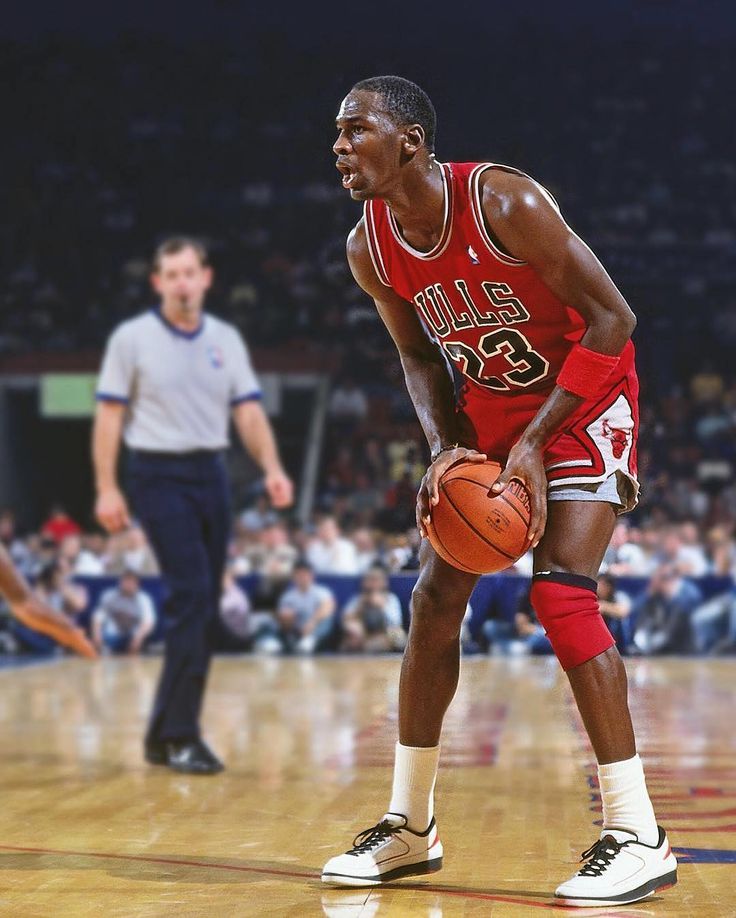
Air Jordan III
The Air Jordan III was the first Jordan signature sneaker to feature the now-famous Jumpman logo. The now-ubiquitous image is a silhouette of Jordan dunking on a 1985 Nike poster.
The shoe was the first Air Jordan to feature a visible Air-Sole unit under the heel. It retained Nike’s “Air” embroidery on the heel, encapsulated Air in the forefoot, and a polyurethane midsole for cushioning.
Jordan averaged 35 points per game while wearing the AJ III to a fourth straight All-Star Game. There, among the game’s elite, MJ earned MVP and a second straight Slam Dunk title, this time by flying in from the free-throw line.
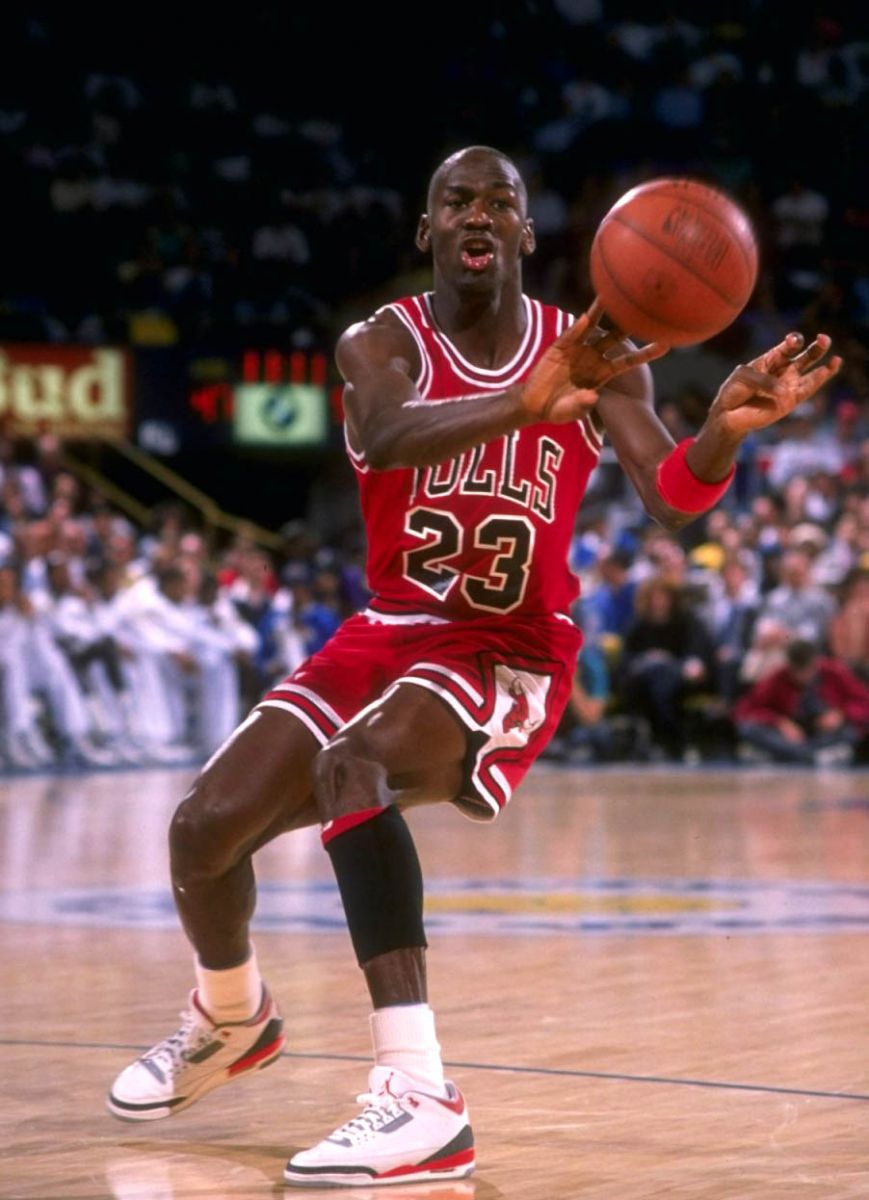
Air Jordan IV
The Jumpman logo made its second appearance on the tongue but with the word “Flight” added below it.
Carrying over from the AJ III were the sculpted midsole and the visible Air unit and padded tongue and collar.
Wearing the AJ IV, MJ was voted to his fifth consecutive All-Star game and won the league scoring title for the third consecutive year. One of the most memorable AJ IV moments was when Michael hit the series-clinching, hanging jumper over Cleveland’s Craig Ehlo in the first round of the playoffs – better known as “The Shot.”
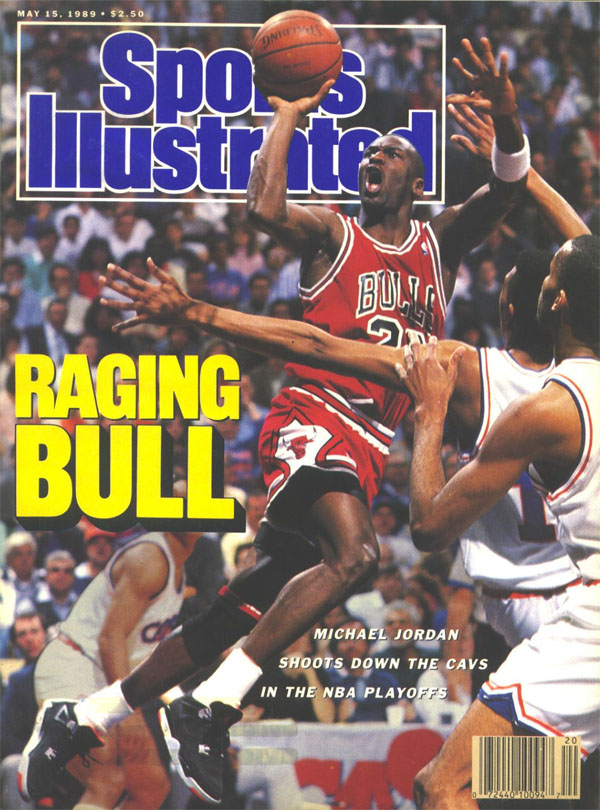
Air Jordan V
The Air Jordan V was a statement of Michael Jordan’s aggressive nature on the court.
An embroidered Jumpman logo graced a tongue that, in certain colorways, also featured 3M reflectivity on the outside. “Air Jordan” was stitched inside.
During that season, Jordan earned his sixth straight All-Star Game appearance, won his fourth straight league scoring title, and was named to the All-NBA First Team and All-Defensive First Team. He and his Bulls were not able to get past Detroit in the conference finals, but they were knocking on the proverbial door to something truly special.

Air Jordan VI
Michael Jordan wore these shoes to the Chicago Bulls’ first championship
While the sports world focused its attention on MJ’s emotional first embrace of the coveted Larry O’Brien trophy, with his father looking on proudly, the sneaker world was trying to catch glimpses of what was on his feet.
While MJ wore the shoe, he averaged 31.5 points per game on his way to a fifth straight scoring title. He also earned first-team All-NBA, first-team All-Defense, and a seventh straight All Star appearance to go along with the league MVP honor. And to cap it off, MJ earned Finals MVP, all of which likely paled in comparison to clutching that trophy.
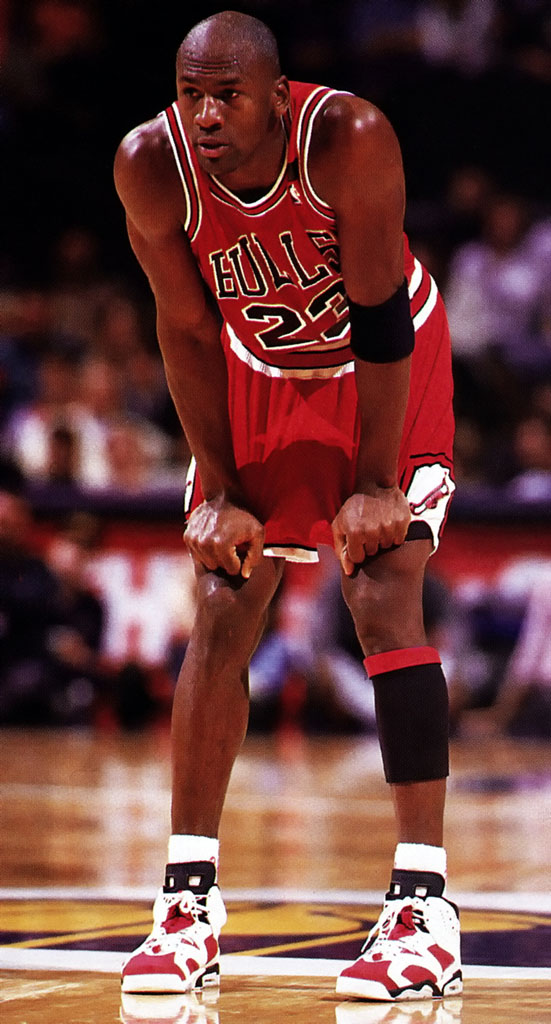
Air Jordan VII
Among other changes in the Air Jordan series, ads shifted from MJ's collaboration with Mars Blackmon to Michael and Bugs Bunny. One commercial featured the duo both wearing the AJ VII beating another team in a game of hoops.
MJ wore the Olympic-inspired colorway to a gold medal with the incomparable "Dream Team" at the 1992 summer games in Barcelona. He won his sixth straight scoring title while wearing the AJ VII and was again named first team All-NBA, first team All-Defense and an All-Star for the seventh consecutive time. He was voted league MVP for the second straight year and won his second NBA Championship ring and Finals MVP with Chicago.

Air Jordan VIII
It was the third time he’d done it, but it was still a first for Michael Jordan. It was 1993 when MJ won his third NBA championship. But it was the first “three-peat” of his storied career.
MJ netted first-team All-NBA, first-team All-Defense, and made his eighth consecutive All-Star Game. Wearing the AJ VIII, MJ scored 32.6 points per game to garner his seventh straight scoring title and was named NBA Finals MVP for the third straight year.

Air Jordan IX
After leading Chicago to a third straight championship in 1993, Jordan walked off the stage. Michael Jordan shocked the basketball world by retiring that October, and then signed with the AA minor-league Birmingham Barons the following February.
The AJ IX became the first Air Jordan that the man himself would never wear in competition. Though, ironically, it’s the AJ IX that’s depicted on the statue of MJ outside the United Center in Chicago.
He retired from baseball on March 10, 1995, and returned to the hardwood on the 19th. He wore 45 for the remainder of that season – his 23 had been retired – and wore the next shoe in his signature line, the Air Jordan X.
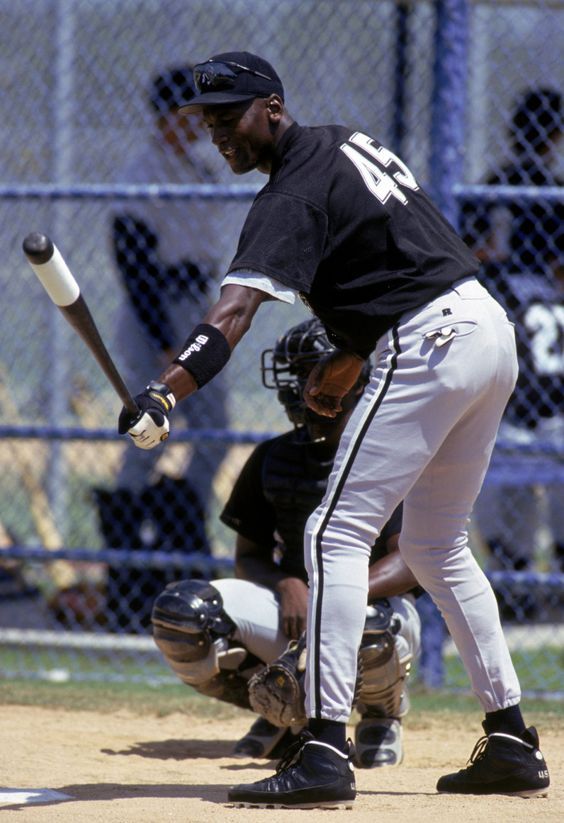
Air Jordan X
When Michael Jordan returned to the NBA on March 19, 1995, against the Indiana Pacers, he wore the "Chicago" colorway of the Air Jordan X.
Nike released eight original colorways of the AJ X. The steel and powder blue uppers were made of full-grain leather; the Black/Shadow upper was made of suede.
Nine days after Jordan told the world "I'm back," he walked into Madison Square Garden and singed the Knicks for 55 points. MJ guided his Bulls back to the playoffs, but the Orlando Magic - led by Penny Hardaway and Shaquille O'Neal - dismissed them in six games in the Eastern Conference semi-finals.
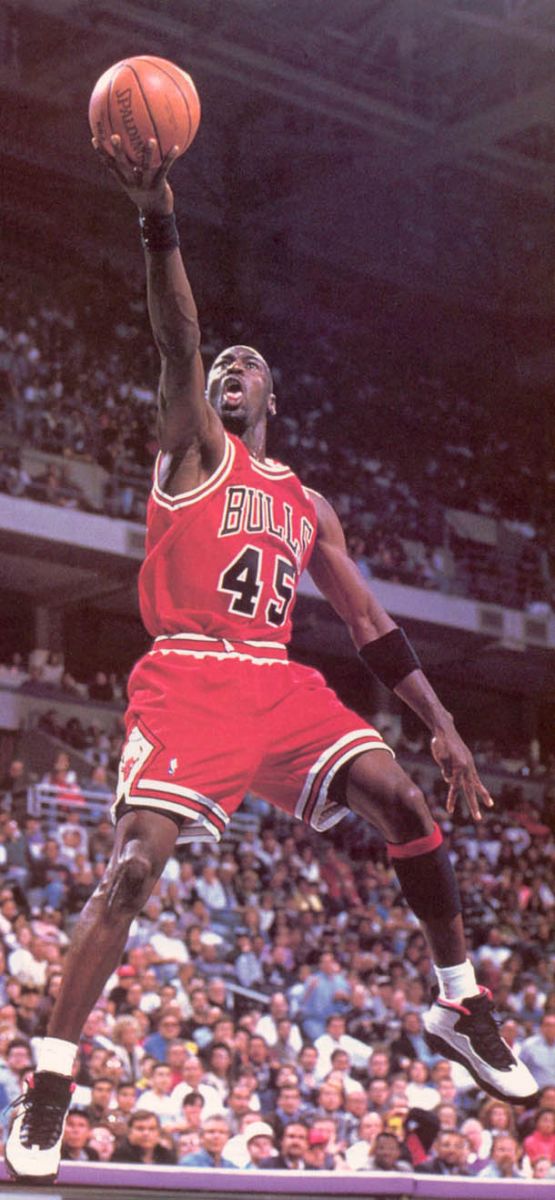
Air Jordan XI
The Air Jordan XI is one of the most-loved sneakers ever. Sole Collector magazine voted the XI the top shoe of all time.
MJ wore the Black/Varsity Royal/White version in the movie Space Jam. Jordan also wore the same "Air Jordan XI Space Jam" shoe in the playoffs. Many Jordan brand athletes have worn the AJ XI over the years
While wearing the AJ XI, MJ was voted to be an All-Star for the 10th time, the All-Star game MVP for the second time, scoring champion for the eighth time, and was again league MVP. His Bulls won the NBA title for the fourth time, and as he was for the previous three championships, Jordan was again the Finals MVP.

Air Jordan XII
Originally released in five colorways, the AJ XII's included the Black/Red that MJ wore during Game 5 of the 1997 NBA Finals against the Utah Jazz, a game that came to be known as "The Flu Game." Michael had fallen ill in the middle of the night prior to that game. Not only did he play, he led all scorers with 38 points, including a big 3-pointer that put Chicago up for good with 25 seconds to play. The shoe he wore during that game is known among collectors as "Flu Game XII."
Jordan wore the shoe during 1997 playoffs. With the AJ XII on his feet, MJ made his 11th All-Star game, won his ninth NBA scoring title and was named first-team All-NBA and first-team All-Defense. He won his fifth NBA title and NBA Finals MVP while wearing the XII.
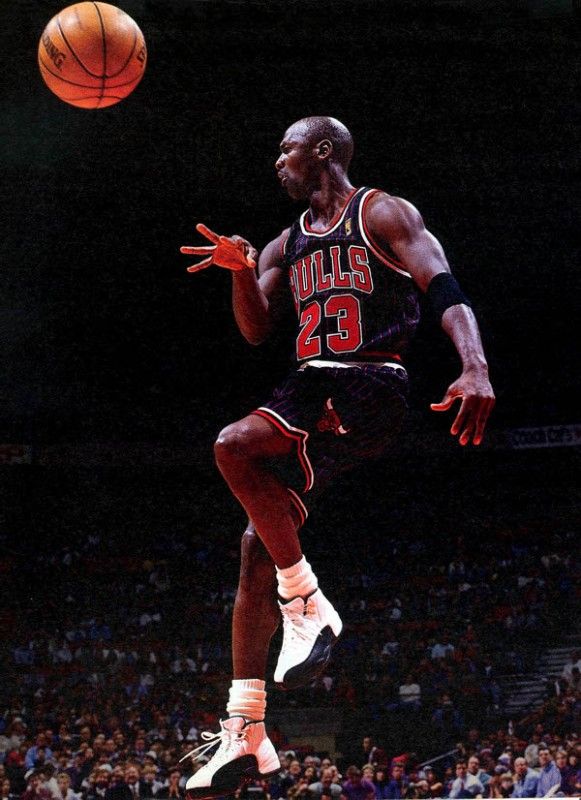
Air Jordan XIII
The XIII originally was released in five colorways for the mid and two for the low. MJ favored the white-based colorways at home and the black-based on the road. He wore the mid through the 1997-98 season and into the playoffs
That season, MJ was voted to his 12th All-Star Game, where he again earned MVP. He also won his record-setting 10th straight league scoring title and was named first-team All-NBA and first-team All-Defense. MJ's sixth NBA championship would net him his sixth NBA Finals MVP honor as well.

Air Jordan XIV - XXXII
After hitting "The Shot" (left) in his Air Jordan XIV's during the 1998 NBA Finals, it would be the last shoe Michael Jordan would wear as a Chicago Bull.
Michael Jordan announced his retirement on Jan. 13, 1999, prior to the beginning of the lockout-shortened season, but that didn't stop Jordan and Nike continuing with the Jordan brand.
17 more pairs of Air Jordans have been made since, and although Jordan never wore them on the court, many other stars, like Kobe, Ray Allen, and Mike Bibby, have worn them on the court, continuing the Jordan legacy.
Air Jordans continue to be some of the most popular and worn shoes to this day.









